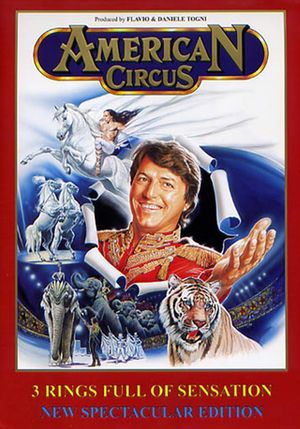Difference between revisions of "Main Page"
From Circopedia
| Line 15: | Line 15: | ||
==In The Spotlight== | ==In The Spotlight== | ||
[[File:American_Circus_Poster_(2003).jpg|right|300px]] | [[File:American_Circus_Poster_(2003).jpg|right|300px]] | ||
| − | ===THE | + | ===THE SISTERS VESQUE=== |
| − | + | For a half-century (roughly from 1900 to 1950), Marthe (1879-1949) and Juliette (1881-1962) Vesque have documented the Parisian circus scene in meticulously precise paintings of circus artists in performance—about whom they often added fascinating information in their journal, which they wrote from 1904 to 1947. They sketched their subjects live, at the circus or in variety theaters, which they frequented assiduously every week. Their unique art production constitutes perhaps the most remarkable visual documentation existing on the European circus of the first half of the twentieth century. | |
| − | + | Known in the French circus milieu as "les demoiselles Vesque," or—somewhat more fittingly because it rings like the name of a circus act—"les sœurs Vesque" (the Vesque sisters), Marthe and Juliette Vesque spent their lives together, never married, and shared not only the same occupation, but also the same passions. Marthe was born in 1879 in Joinville-le-Pont, a suburb of Paris, and Juliette, who was born in Paris, followed her in 1881. | |
| − | + | Their father, Julien Vesque (1848-1895), was a respected botanist; he was Maître de Conférences (Professor) at the Institut Agronomique in Paris and had published an important Traité de Botanique agricole et industrielle in 1885. Like most botanists of his era, Julien Vesque used to make meticulous drawings of his observations. He passed his artistic talents on to his daughters, and was not only their first art teacher, but he also taught them how to do precise and accurate renderings through careful observation. | |
| + | |||
| + | Marthe and Juliette developed a passion for the circus at an early age. In the first half of the twentieth century, Paris was Europe’s circus capital. During their lifetime, they were able to visit regularly not only the Cirque d’Hiver and Cirque Medrano, which preceded and survived them, but also other Parisian circuses: The Nouveau Cirque, until 1926; the Cirque Métropole (later Cirque de Paris) from 1906 to 1930; the Hippodrome de la Place Clichy from 1900 to 1907; and the Empire Music-Hall Cirque from 1924 to 1937.... ([[The Togni Family|more...]]) | ||
==New Biographies== | ==New Biographies== | ||
Revision as of 04:02, 31 January 2017
|
In The Spotlight
THE SISTERS VESQUE
For a half-century (roughly from 1900 to 1950), Marthe (1879-1949) and Juliette (1881-1962) Vesque have documented the Parisian circus scene in meticulously precise paintings of circus artists in performance—about whom they often added fascinating information in their journal, which they wrote from 1904 to 1947. They sketched their subjects live, at the circus or in variety theaters, which they frequented assiduously every week. Their unique art production constitutes perhaps the most remarkable visual documentation existing on the European circus of the first half of the twentieth century.
Known in the French circus milieu as "les demoiselles Vesque," or—somewhat more fittingly because it rings like the name of a circus act—"les sœurs Vesque" (the Vesque sisters), Marthe and Juliette Vesque spent their lives together, never married, and shared not only the same occupation, but also the same passions. Marthe was born in 1879 in Joinville-le-Pont, a suburb of Paris, and Juliette, who was born in Paris, followed her in 1881.
Their father, Julien Vesque (1848-1895), was a respected botanist; he was Maître de Conférences (Professor) at the Institut Agronomique in Paris and had published an important Traité de Botanique agricole et industrielle in 1885. Like most botanists of his era, Julien Vesque used to make meticulous drawings of his observations. He passed his artistic talents on to his daughters, and was not only their first art teacher, but he also taught them how to do precise and accurate renderings through careful observation.
Marthe and Juliette developed a passion for the circus at an early age. In the first half of the twentieth century, Paris was Europe’s circus capital. During their lifetime, they were able to visit regularly not only the Cirque d’Hiver and Cirque Medrano, which preceded and survived them, but also other Parisian circuses: The Nouveau Cirque, until 1926; the Cirque Métropole (later Cirque de Paris) from 1906 to 1930; the Hippodrome de la Place Clichy from 1900 to 1907; and the Empire Music-Hall Cirque from 1924 to 1937.... (more...)
New Biographies
- Gene Mendez, High Wire Artist
- Franz Czeisler (Tihany), Magician, Circus Owner
- Circuses Fernando and Medrano, History
- Kannan Bombayo, Rope Dancer
- Réjean St. Jules, Juggler
New Videos
- Elena Gatilova, Aerial Hoop (2016)
- Yuriy & Natalya Alksandrov, Washington Trapeze (1983)
- Les Diables Blancs, High Wire (1969)
- Flavio Togni, Elephants and Horses Act (1983)
- Mariya Sarach, hand balancer (2016)
Featured Oral Histories
- Jean Richard and Jean-Pierre Richard at the Cirque jean Richard - Christian Boner Interview (1979)
- Jérôme Medrano about Buster Keaton at the Cirque Medrano (1947)
- Moira Orfei, Circus Owner - Davide Maggio Interview (2012)
- Oleg Popov, clown - Russian Television Feature (2014)
- Albert Fratellini, clown - French Television Interview (1957)
A Message from the Editor
CIRCOPEDIA is a constantly evolving and expanding encyclopedia of the international circus. New videos, biographies, essays, and documents are added to the site on a weekly—and sometimes daily—basis. So keep visiting us: even if today you don't find what you're looking for, it may well be here tomorrow! And if you are a serious circus scholar and spot a factual or historical inaccuracy, do not hesitate to contact us: we will definitely consider your remarks and suggestions.
- Dominique Jando
- Editor/Curator
